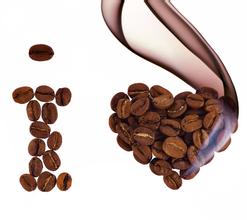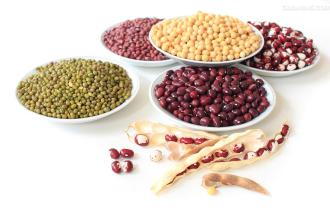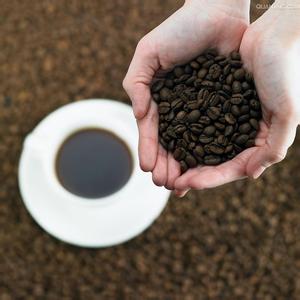Brazilian Minas Coffee Bean Flavor Description Grind Scale Variety Treatment Taste Introduction
Flavor description of Brazilian Minas Coffee Bean introduction to the taste of grinding scale variety treatment
Coffee was first introduced to Brazil in the early 18th century. In 1727, the Brazilian government sent a personable army officer to secretly bring coffee seeds from French Gaiana to Brazil on the pretext of mediating border disputes. It is said that the governor's wife of French Gayana was so fascinated by the officer that she secretly brought coffee tree seeds to him at a farewell dinner party. At present, 2 million hectares of land in Brazil is used to grow coffee, the largest is Arabica, and the beans will eventually be sent to large bakers in various countries, known as Sandos (named after the port of export santos, not the producing area) Fazenda Rainha (Queen Farm) is located in the Alta Mogiana area of S ã o Paulo, north of the city of Sao Paulo. This manor is well-known in Brazil and is owned by the Carvalho Dias family. Since the first Brazilian COE competition in 1999, Carvalho Dias has won awards every year, winning more than 12 times in the past seven years, and even arranged for the champion, 9th, 11th, and so on in 2004. Many manors of various sizes in Brazil have been hoping to be shortlisted for many years, but it is difficult to get them. And Queen's Manor (Fazenda Rainha) enjoys a brilliant record: 2000 runner-up, 2001 second runner-up, 2005 29th place, so far, Queen's Manor has won three awards. Yellow bourbon beans are sweet, dry and sunbathing (or half-sun) will make them slightly sour, but combine well with sweetness and have tropical fruit aromas.
Since the introduction of coffee trees from French Guiana (Guyana) in 1720, coffee production has gradually become a science. Before 1990, the Brazilian government carried out strict monitoring of the coffee industry, with both strict intervention and price protection measures, and the state has been implementing minimum price protection measures for farmers, resulting in coffee overproduction. Before World War II, the surplus stock reached 78 million bags, which had to be burned by fire or thrown into the water to destroy.
After baking for 4 times, it is better to choose between 1 minute and 15-20 seconds after the end of the explosion. Taste with obvious sweetness, but not so boring sweet, the background with a hint of lemon aroma, this aroma is more prominent in the wet fragrance stage, the latter part of the performance has an obvious taste of dark chocolate, the overall feeling is more round, while reflecting the overall characteristics of Brazil, without losing liveliness. The size of the coffee beans is 17gram and 18 eyes, the color is clear and smooth, and it is very fresh. Coffee beans are treated with pulped natural and dried in the sun, that is, the coffee is mechanically peeled, leaving the seeds and pulp of the coffee, and then sun-dried.

Important Notice :
前街咖啡 FrontStreet Coffee has moved to new addredd:
FrontStreet Coffee Address: 315,Donghua East Road,GuangZhou
Tel:020 38364473
- Prev

Yellow Bourbon Coffee Flavor Description Taste Variety Characteristics Processing Method Grinding Scale Introduction
The Carvalho Dias family is a founding member of the Brazilian Fine Coffee Association. Their commitment to coffee quality and environmental protection is obvious. In the family farm, they use natural waterfalls to develop pollution-free hydropower and meet their own electricity needs.) Another winner of the family is this waterfall
- Next

Are Colombian coffee beans grown in the Andes? Introduction to the description of brand taste and flavor
Are Colombian coffee beans grown in the Andes? Introduce coffee is the pride of Colombians, Colombians like to talk about a few things, in addition to their football, which was once among the best in the world, is the coffee they are proud of. Drinking coffee in Colombia is a kind of enjoyment, not only essential three times a day, but also full of streets and alleys.
Related
- Detailed explanation of Jadeite planting Land in Panamanian Jadeite Manor introduction to the grading system of Jadeite competitive bidding, Red bid, Green bid and Rose Summer
- Story of Coffee planting in Brenka region of Costa Rica Stonehenge Manor anaerobic heavy honey treatment of flavor mouth
- What's on the barrel of Blue Mountain Coffee beans?
- Can American coffee also pull flowers? How to use hot American style to pull out a good-looking pattern?
- Can you make a cold extract with coffee beans? What is the right proportion for cold-extracted coffee formula?
- Indonesian PWN Gold Mandrine Coffee Origin Features Flavor How to Chong? Mandolin coffee is American.
- A brief introduction to the flavor characteristics of Brazilian yellow bourbon coffee beans
- What is the effect of different water quality on the flavor of cold-extracted coffee? What kind of water is best for brewing coffee?
- Why do you think of Rose Summer whenever you mention Panamanian coffee?
- Introduction to the characteristics of authentic blue mountain coffee bean producing areas? What is the CIB Coffee Authority in Jamaica?

